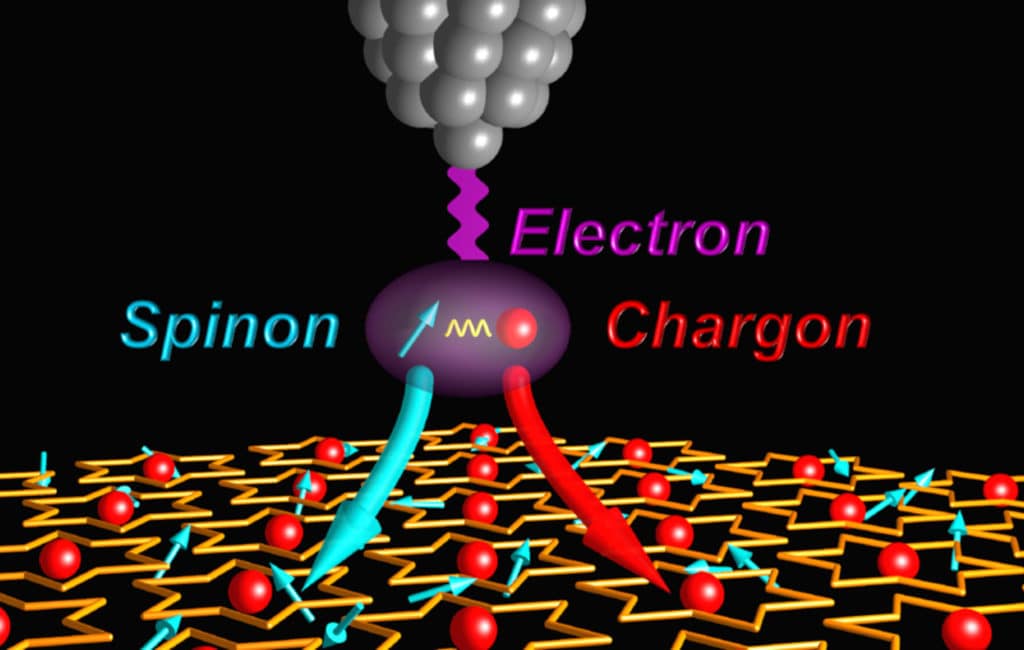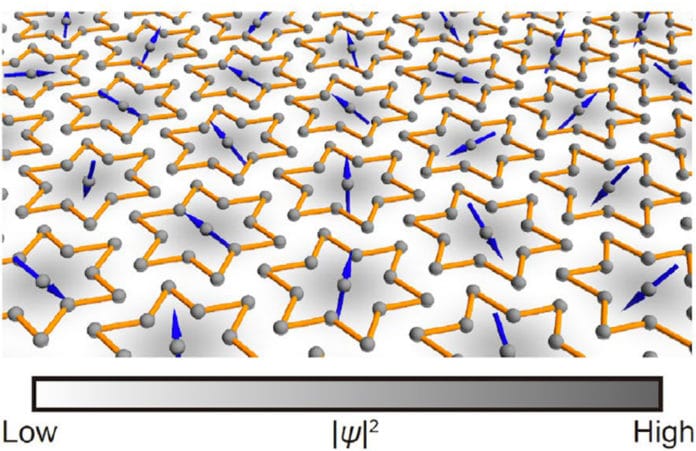For the first time, scientists at Lawrence Berkeley National Laboratory (Berkeley Lab) have captured an image of how electrons in a QSL decompose into spinons and chargons. Unlike other studies that have seen footprints of this phenomenon, this study has had an actual picture of the state in which the spinon lives.
In Quantum State Liquid (QSL), spin-like particles are called spinons and charge-like particles called chargons. Spins are like bigfoot of quantum physics. They have no electric charge. Until now, scientists need to rely on other techniques to look for their signatures.
This new study has demonstrated a way to identify spions in QSLs by imaging their distribution in the material. Scientists begin with growing single-layer samples of tantalum diselenide (1T-TaSe2) that are only three atoms thick. By using a technique called angle-resolved photoemission spectroscopy that uses X-rays, scientists characterized the thin films.
Later, scientists used scanning tunneling microscopy (STM), scientists were able to inject electrons from a metal needle into the tantalum diselenide TMDC sample. Images gathered by scanning tunneling spectroscopy (STS) revealed something quite unexpected: a layer of mysterious waves having wavelengths larger than one nanometer (1 billionth of a meter) blanketing the material’s surface.

Study leader Mike Crommie, a senior faculty scientist at Lawrence Berkeley National Laboratory (Berkeley Lab) and physics professor at UC, Said, “The long wavelengths we saw didn’t correspond to any known behavior of the crystal. We scratched our heads for a long time. What could cause such long-wavelength modulations in the crystal? We ruled out the conventional explanations one by one. Little did we know that this was the signature of spinon ghost particles.”
When scientists injected an electron into QSL, it breaks apart into two particles inside the QSL– spinons (also known as ghost particles) and chargons. This happens due to the peculiar way in which spin and charge in a QSL collectively interact with each other. The spinon ghost particles end up separately carrying the spin while the chargons separately bear the electrical cost.
Crommie said, “STM/STS images show that the chargons freeze in place, forming what scientists call a star-of-David charge-density-wave. Meanwhile, the spinons undergo an “out-of-body experience” as they separate from the immobilized chargons and move freely through the material.”
“This is unusual since, in a conventional material, electrons carry both the spin and charge combined into one particle as they move about,” he explained. “They don’t usually break apart in this funny way.”
“QSLs might one day form the basis of robust quantum bits (qubits) used for quantum computing. In conventional computing, a bit encodes information either as a zero or a one, but a qubit can hold both zero and one simultaneously, thus potentially speeding up certain types of calculations. Understanding how spinons and chargons behave in QSLs could help advance research in this area of next-gen computing.”
“Part of the beauty of this topic is that all the complex interactions within a QSL somehow combine to form a simple ghost particle that bounces around inside the crystal. Seeing this behavior was pretty surprising, especially since we weren’t even looking for it.”
Journal Reference:
- Ruan, W., Chen, Y., Tang, S. et al. Evidence for quantum spin liquid behavior in single-layer 1T-TaSe2 from scanning tunneling microscopy. Nat. Phys. (2021). DOI: 10.1038/s41567-021-01321-0
